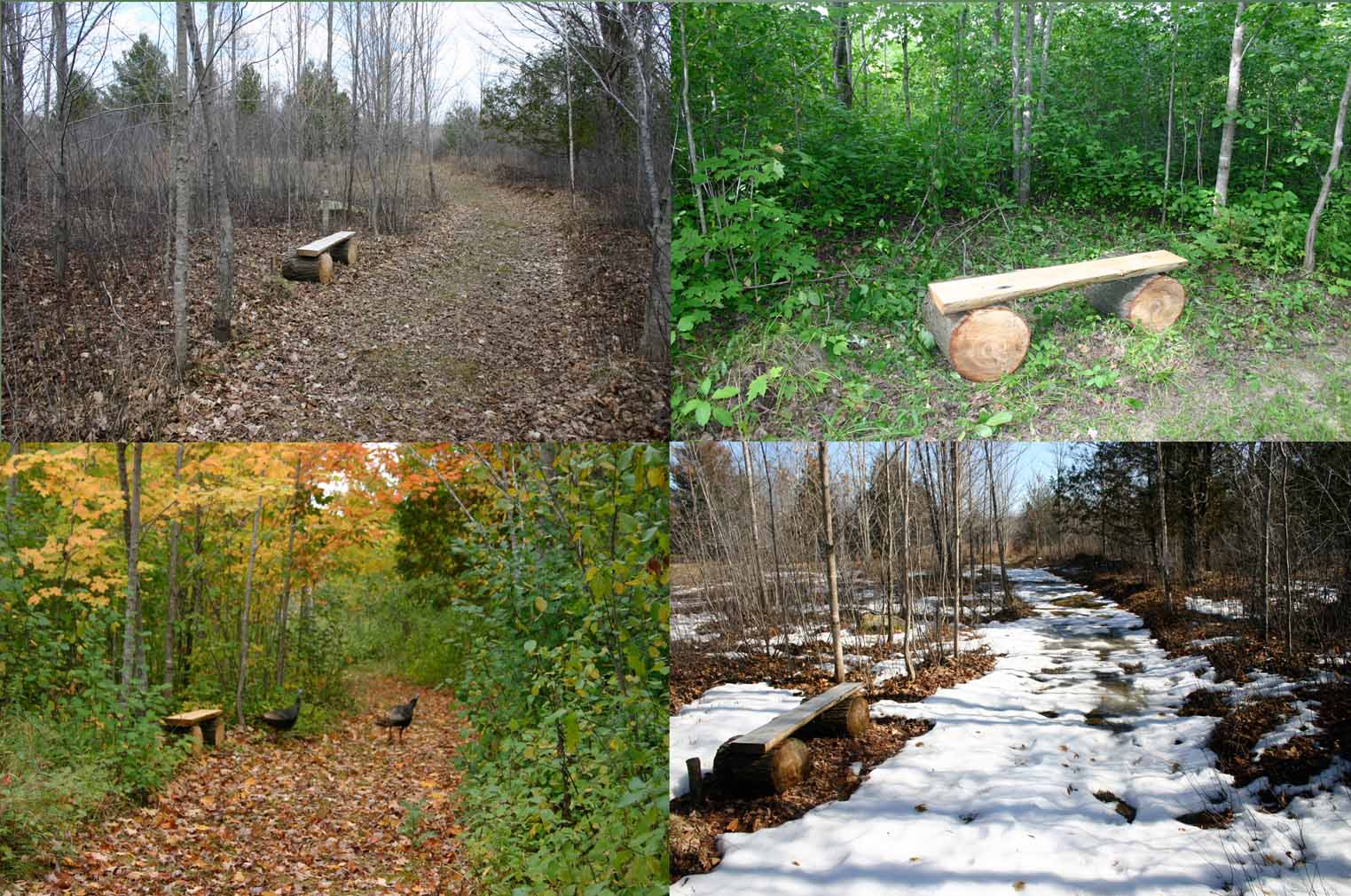
Bench 3 at Kuse Nature Preserve
Changes through the years and the seasons have been captured in photos taken near Bench 3.
Early pictures showed the abundant supply of large rocks left by the glacier. As children, we named the rocks we saw along the cow paths. There was the "Stove Stone," a large, flat, black rock that looked like a wood-burning stove and another black basalt with a covering of white quartz we named the "frosting stone." A huge granite boulder with a stripe of quartzite running through it was "The Big Man with a Belt." Then there was the "Camel." It was a large rounded stone standing on its side that we imagined to be the hump of a camel that could be ridden to faraway places. Later, a bulldozer was hired to bury some of these boulders deep underground so the land could be cultivated.
A few trees were left standing in the pasture to provide shade for cows. In spring, Walter Kuse, our father, tapped one of the Sugar Maple trees so that sap could be collected and boiled into maple syrup. Yellow-bellied Sapsuckers also came and tapped the trees.
Watch for some of these seasonal changes.
Each spring, new buds and flowers appear on the Red and Sugar Maple trees. Beneath them in puddles of water, brown, decaying leaves soon become soil that will nourish plants. Spring Beauties emerge among brown leaves. Spring rains moisten moss on rocks and it grows lush and green. The fiddleheads of the Interrupted Fern slowly unfurl nearby. An occasional rainbow arches over the grove giving hope and promise for the future. What birds may be among the spring migrants passing through that can be easily seen while the branches are still somewhat bare?
As days go on, brilliant green leaves appear on trees and other plants. The dark green of several Black Hills Spruce add to the many shades of green.
In fall, the lush green is replaced by the brilliance of red, orange and yellow leaves on hardwood trees. Listen as they create a soft rustling carpet that will be replaced with the silent blanket of the snows of winter.
Use a compass. Notice the direction the trail is beginning to take. Compare the cultivated farm land with the regrowth of forest on the other side.
Use the links on the grid below to help you observe.
Location Information |
Plants |
Animals |
Glacial Deposit of Many Rocks |
White Birch |
Turkeys |
Buckthorn |
Sapsuckers |
|
Sugar Maple |
||
Red Maple |
||
Black Hills Spruce |
||
Interrupted Fern |
||
Moss on a Rock |
___________
© Dr. Hildegard Kuse and Dr. Loretta Kuse